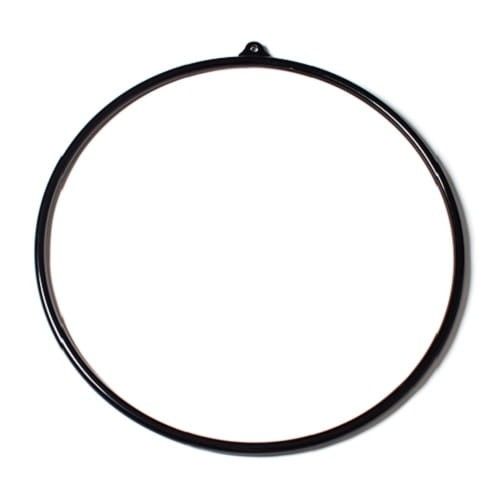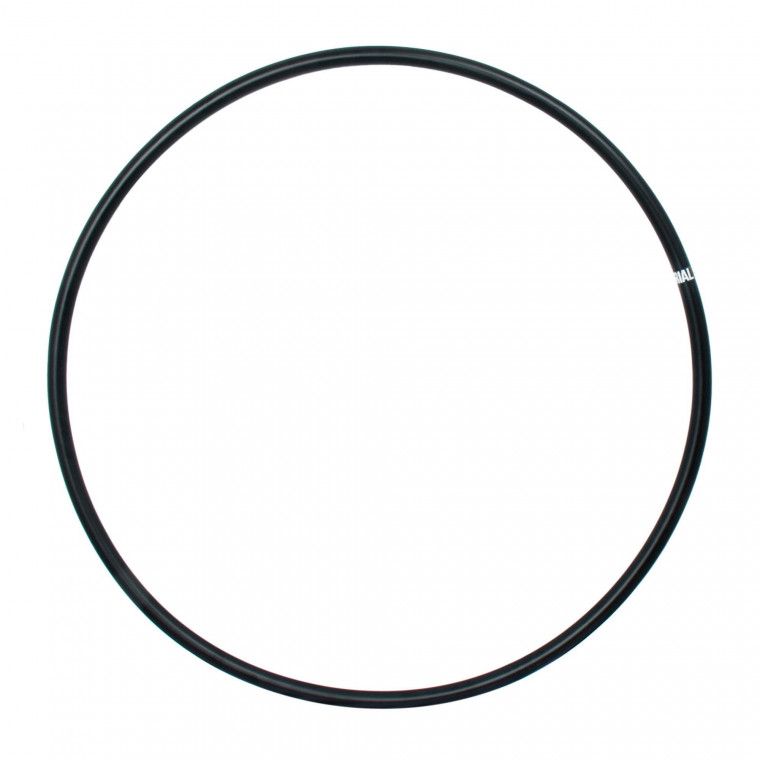Have you ever been mesmerized by the breathtaking performances of aerial hoop artists? If you’re intrigued by this captivating art form and eager to challenge yourself while building strength and flexibility, then the hoop is perfect for you. In this beginner’s guide, we’ll delve into the fundamentals of aerial hoop, provide you with valuable tips and tricks, and unveil the origins of this enchanting aerial art form. Get ready to embark on a thrilling journey into the world of hoop!
In this beginner’s guide, we’ll explore the basics of the aerial hoop and give you some tips and tricks for getting started.
What is the Aerial Hoop?
Is a large metal or aluminium ring that is suspended from the ceiling. Performers use the hoop to execute a variety of movements, including spins, poses, and drops. The hoop can be adjusted to different heights, allowing performers to work at varying levels of difficulty.

Exclusive Offer: Enjoy a 10% discount on aerial hoop purchases for our valued readers. Use code ‘HOOP10’ at checkout to claim your savings. Click on the image to buy
Origins of Aerial Hoop
The origins of the aerial hoop can be traced back to the traditional circus arts of the 19th century. Originally, the hoop was made of a solid wooden circle covered in cloth. It was suspended from the ceiling by ropes or chains and used in combination with other aerial apparatus such as trapeze and rope. Over time, the wooden hoop was replaced by a metal or aluminium hoop, which made it stronger, lighter, and more versatile.
As circus arts evolved, the hoop became a popular discipline among aerialists and performers. Today, the hoop is often seen in contemporary circus shows, dance performances, and aerial arts competitions. It has also become a popular fitness and recreational activity for people of all ages and abilities.
When exactly Aerial Hoop as a means of circus performances first appeared is rather vague. It is known, however, that since the late 1700s, metal hoops were used in house yards as a way of recreation for children
The first use of the hoop ever recorded is in an 1893 advertisement in New York Clipper where a performer called “Caedo” used this equipment. It was probably one of the first hoops made according to Edward Van Wyck’s statement in one of his letters in 1903.
Benefits of The Aerial Hoop
The hoop offers a variety of physical and mental benefits. Here are some of the key benefits of practicing aerial hoop:
- Full-Body Workout: Aerial hoop engages multiple muscle groups simultaneously, providing a comprehensive full-body workout. It strengthens the core, arms, shoulders, back, and legs while improving overall flexibility, endurance, and coordination.
- Improved Flexibility: Regular practice on the hoop can lead to increased flexibility over time. As you work through different poses and movements, you’ll gradually enhance your range of motion and achieve greater flexibility in your muscles and joints.
- Enhanced Strength: Holding, gripping, and maneuvering on the hoop requires significant upper body and core strength. Over time, this leads to improved muscle tone and strength development, especially in the arms, shoulders, and core muscles.
- Balance and Coordination: Aerial hoop demands a high degree of balance and coordination as you navigate through various poses and transitions in mid-air. This helps improve your proprioception and spatial awareness.
- Cardiovascular Fitness: Many aerial hoop routines involve dynamic movements and spins that can elevate your heart rate, contributing to improved cardiovascular health and endurance.
- Stress Relief: Aerial arts, including hoop, offer a creative and expressive outlet that allows you to disconnect from daily stressors and focus solely on your movements. The act of performing in the air can be meditative and help reduce stress and anxiety.
- Body Confidence: As you conquer new moves and progress in your aerial hoop practice, you’ll likely experience an increase in self-confidence and body positivity. Mastering challenging poses can boost your self-esteem and self-image.
- Artistic Expression: Aerial hoop is not just about physical fitness; it’s also a form of artistry. You have the opportunity to express yourself creatively, choreograph routines, and tell stories through your movements in the air.
- Social Engagement: Aerial hoop classes and communities provide an opportunity to connect with like-minded individuals who share your passion for aerial arts. Building relationships with fellow practitioners can contribute to a sense of belonging and camaraderie.
- Mind-Body Connection: Aerial hoop requires focus, concentration, and mindfulness. Learning to control your movements and execute poses in the air deepens the connection between your mind and body.
- Increased Range of Motion: The diverse range of movements and stretches performed on the aerial hoop can gradually lead to improved joint mobility and overall range of motion.
- Fun and Variety: Aerial hoop offers a unique and exhilarating way to stay active, which can help prevent workout monotony and keep you motivated to stay consistent in your fitness routine.
It’s important to note that while aerial hoop offers numerous benefits, it is a physically demanding activity that requires proper training, technique, and safety precautions. Beginners should always start under the guidance of qualified instructors to ensure safe and effective practice.
Tips for Beginners
Starting as a beginner in aerial hoop can be both exciting and challenging. Here are some essential tips to help you get started on the right foot and make the most of your aerial hoop journey:
- Take Beginner Classes: Enroll in a reputable aerial hoop class taught by experienced instructors. Beginner classes are designed to introduce you to the basics of aerial hoop, proper technique, safety measures, and foundational skills.
- Warm-Up: Always warm up your body before starting any aerial practice. Focus on dynamic stretches and movements to increase blood flow and prepare your muscles for the demands of the hoop.
- Listen to Your Body: Pay close attention to your body’s signals. If you feel pain or discomfort, stop and assess the situation. Aerial arts can be intense, so it’s important to avoid overexertion and injuries.
- Build Strength: Aerial hoop requires upper body and core strength. Incorporate strength-training exercises into your routine to gradually build the necessary muscles. Exercises like pull-ups, push-ups, planks, and hanging leg raises can be helpful.
- Work on Flexibility: Flexibility is key in aerial arts. Dedicate time to stretching regularly to improve your flexibility, especially in your shoulders, back, hips, and hamstrings.
- Progress Gradually: Aerial hoop skills are built step by step. Start with basic moves and gradually progress to more advanced poses and transitions as you gain strength and confidence.
- Focus on Technique: Proper technique is crucial for safety and effective execution. Pay attention to your instructor’s guidance and practice correct body positioning and alignment.
- Use Safety Equipment: Always use appropriate safety equipment, such as crash mats and spotters, especially when attempting new or challenging moves.
- Mind Your Grips: Grip strength is essential for aerial hoop. Learn different types of grips, including standard grip, split grip, and thumb grip, and practice gripping the hoop securely.
- Stay Hydrated: Aerial practice can be physically demanding and cause you to sweat. Drink plenty of water before, during, and after your sessions to stay hydrated.
- Rest and Recover: Allow your body time to recover between training sessions. Adequate rest helps prevent burnout and reduces the risk of overuse injuries.
- Be Patient: Progress in aerial arts takes time. Celebrate small victories along the way and be patient with yourself as you learn and develop new skills.
- Film Yourself: Recording your practice sessions can be incredibly helpful for self-assessment. Reviewing your videos allows you to identify areas for improvement and track your progress.
- Cross-Train: Engage in complementary activities like yoga, Pilates, or general strength training to enhance your overall fitness and support your aerial hoop practice.
- Have Fun: Aerial hoop is not just about fitness; it’s a form of creative expression and artistry. Enjoy the process, embrace challenges, and have fun experimenting with different moves and routines.
Remember, safety should always be a top priority when practicing aerial hoop. As you progress, consider seeking guidance from experienced aerialists and instructors to ensure that you’re advancing in a safe and controlled manner.
Why is important to buy hoops that meet safety standards?
Durability
Aerial hoop is a physically demanding discipline that puts a lot of stress on the equipment. Hoops that meet safety standards are made with high-quality materials and construction techniques that ensure they can withstand the rigors of aerial practice.
Strength
Safety standards for aerial hoops include minimum weight and load-bearing requirements. Hoops that meet these standards are strong enough to support the weight of the performer and any dynamic movements performed during aerial practice.
Safety
Hoops that meet safety standards are designed with safety in mind. They are tested and certified to ensure they can handle the forces placed on them during aerial practice, reducing the risk of equipment failure and injury.

Exclusive Offer: Use code ‘HOOP10’ at checkout to claim a 10% discount. TUV Certified. Click on the image to buy
Insurance
Many aerial studios and performance venues require performers to use equipment that meets safety standards to be covered by liability insurance. Using hoops that meet safety standards can help ensure that performers are protected in the event of an accident.
Peace of Mind
Knowing that you are using equipment that meets safety standards can give you peace of mind during aerial practice. You can focus on learning new skills and improving your technique, rather than worrying about the safety and durability of your equipment.
Ready to start your aerial hoop journey? Enjoy a 10% discount on high-quality, TUV-certified aerial hoops from Vertical Wise Shop. Use code ‘HOOP10’ at checkout for your savings, and ensure you’re using a safe, reliable hoop to practice on.
Using Protective Mats
When delving into the world of aerial acrobatics, safety is of paramount importance. The use of appropriate protective measures can shield you from injuries and allow you to enjoy the experience safely.
One of the fundamental protective measures is the use of protective mats during hoop practice. These mats provide shock absorption and safeguard in case of falls. It is important to choose high-quality protective mats that meet the required safety standards.
Safety is key in aerial practice. Keep yourself protected with top-quality safety mats from Vertical Wise Shop.

Conclusion
Overall, buying a hoop that meets safety standards is essential for the safety, durability, and performance of both the performer and the equipment. Whether you’re a seasoned performer or a curious beginner, the hoop is definitely worth exploring. So why not give it a try and see where it takes you? If you’re ready to explore the aerial world and looking for the perfect hoop to suit your needs, check out our comprehensive Aerial Hoop Buying Guide for expert tips and advice.








